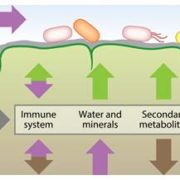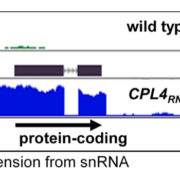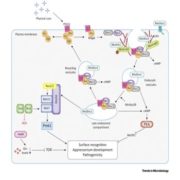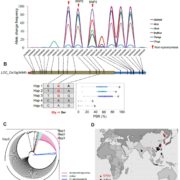Review: Exchange of small regulatory RNAs between plants and their pests (Plant Physiol)
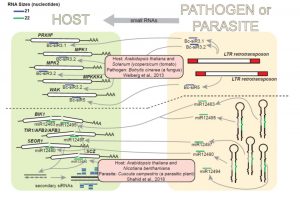 Trans-species small RNAs are the latest class in the family of signals that move between plants and their attackers. Hudzik et al. review this topic, covering small RNAs that move from plant to pest and from pest to plant. The transmitted RNAs function by interfering with gene expression in the recipient. Naturally-occurring plant-produced small RNAs have been identified that target fungal and oomycete pathogens. Recently, plant-produced extracellular vesicles (EVs) have been identified carrying defense proteins, small RNAs, and a new class called tiny RNAs (tyRNAs). Transgenic plants have also been created that produce small RNAs targeting nematodes, insects, and parasitic plants, as well as fungi and oomycites, in a process called host-induced gene silencing (HIGS). Conversely, many of these pests and pathogens produce small RNAs that target plant genes. The authors also describe the roles of small RNAs in the interactions between parastic plants and their hosts, and speculate on the possible evolution of trans-species RNAs. (Summary by Mary Williams) Plant Physiol. 10.1104/pp.19.00931
Trans-species small RNAs are the latest class in the family of signals that move between plants and their attackers. Hudzik et al. review this topic, covering small RNAs that move from plant to pest and from pest to plant. The transmitted RNAs function by interfering with gene expression in the recipient. Naturally-occurring plant-produced small RNAs have been identified that target fungal and oomycete pathogens. Recently, plant-produced extracellular vesicles (EVs) have been identified carrying defense proteins, small RNAs, and a new class called tiny RNAs (tyRNAs). Transgenic plants have also been created that produce small RNAs targeting nematodes, insects, and parasitic plants, as well as fungi and oomycites, in a process called host-induced gene silencing (HIGS). Conversely, many of these pests and pathogens produce small RNAs that target plant genes. The authors also describe the roles of small RNAs in the interactions between parastic plants and their hosts, and speculate on the possible evolution of trans-species RNAs. (Summary by Mary Williams) Plant Physiol. 10.1104/pp.19.00931


